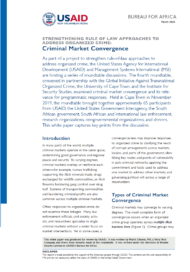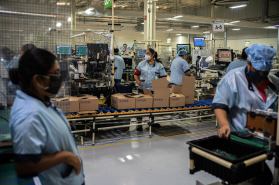Posted on 24 Mar 2020
In many parts of the world, multiple criminal markets operate in the same space, undermining good governance and regional peace and security.
To varying degrees, criminal markets overlap or reinforce each other—for example, human trafficking supporting the illicit minerals trade, drugs exchanged for wildlife commodities, or illicit firearms bolstering gang control over drug turf. Systems of transporting commodities and laundering criminal profits are also common across multiple criminal markets.
Often, responses to organized crime do not examine these linkages. Many law enforcement officials, civil society activists, and researchers specialize in single criminal markets without a wider focus on market intersections. Yet in some cases, a convergence lens may improve responses to organized crime by clarifying the reach of corrupt arrangements across markets, locales, and parts of the government; identifying key nodes and points of vulnerability in poly-criminal networks; applying the commitment and tools used to address one market to address other markets; and galvanizing political will across a range of stakeholders.
As part of a project to strengthen rule-of-law approaches to address organized crime, the United States Agency for International Development (USAID) and Management Systems International (MSI) are hosting a series of roundtable discussions. The fourth roundtable, convened in partnership with the Global Initiative Against Transnational Organized Crime, the University of Cape Town, and the Institute for Security Studies, examined criminal market convergence and its relevance for programmatic responses.
Held in Cape Town in November 2019, the roundtable brought together approximately 65 participants from USAID, the United States Government interagency, the South African government, South African and international law enforcement, research organizations, non-governmental organizations, and donors. This white paper captures key points from the discussion.




